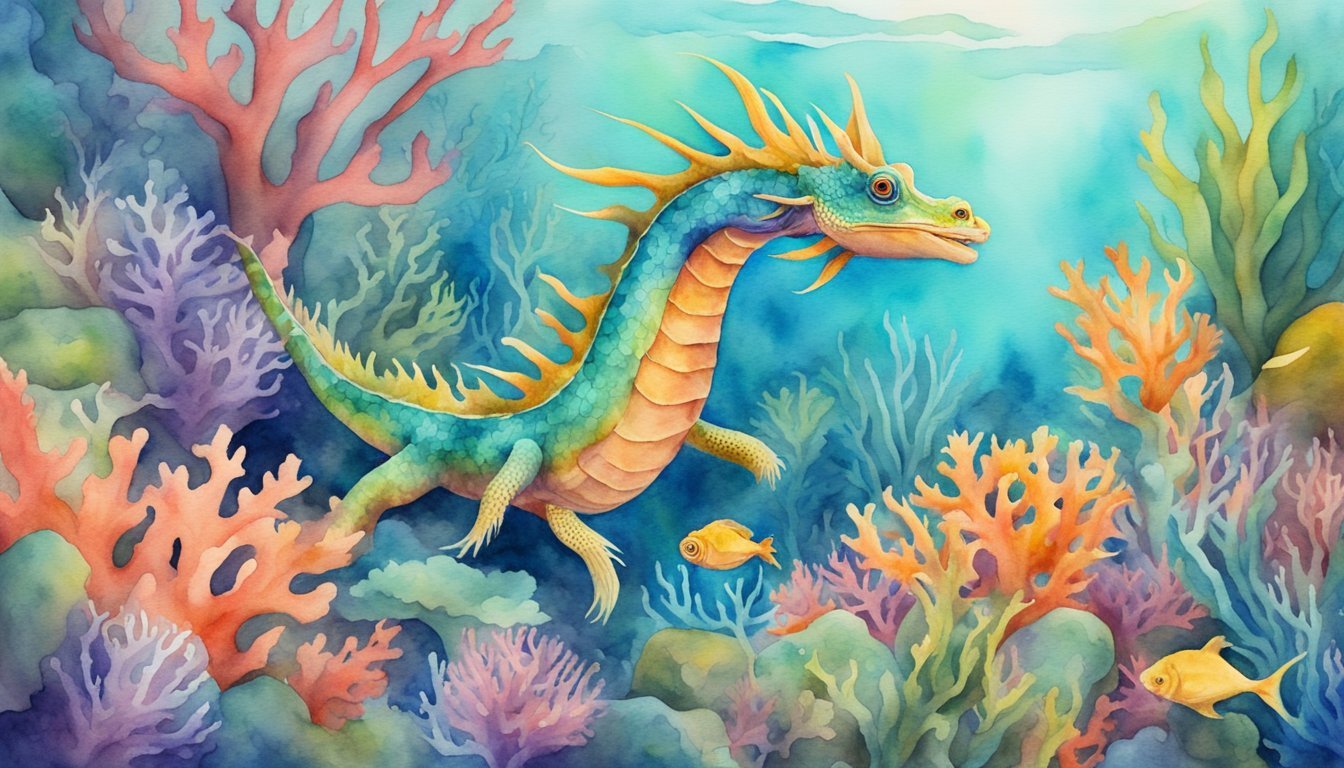Sea Dragon Overview
Sea dragons are captivating marine creatures that belong to the family Syngnathidae, which also includes seahorses and pipefish. With their elaborate leaf-like appendages and elongated body structure, they are not only a magnificent sight but also a subject of great interest in marine biology.
Biology and Appearance
Sea dragons have a unique and delicate appearance that differentiates them from other marine species. Two species are widely recognized: the leafy sea dragon (Phycodurus eques) and the weedy sea dragon (Phyllopteryx taeniolatus). The leafy sea dragon is particularly known for its numerous leaf-like appendages, which serve as an effective camouflage within its environment. Its body is adorned with vibrant shades of purple and reddish hues that blend seamlessly with the seaweed and kelp it inhabits.
| Characteristic | Leafy Sea Dragon (Phycodurus eques) | Weedy Sea Dragon (Phyllopteryx taeniolatus) |
|---|---|---|
| Scientific Name | Phycodurus eques | Phyllopteryx taeniolatus |
| Appearance | Numerous leaf-like appendages, vivid coloration | Less ornate, with fewer protrusions, reddish with purple markings |
| Length | Up to 35 cm | Up to 46 cm |
| Fins | Small, nearly transparent pectoral fins | Small, nearly transparent pectoral fins |
| Marine Emblem of | South Australia | Victoria |
Habitat and Distribution
Sea dragons are endemic to the waters down under, found primarily along the southern and western coasts of Australia. These fascinating creatures inhabit the aquatic realms from the Eastern Indian Ocean to the South Western Pacific Ocean, favoring areas that boast plenty of marine vegetation. Specifically, they thrive in environments like kelp forests, rocky reefs, and seagrass beds, which provide both food and protection. The leafy sea dragon is mainly found in the regions of South Australia, Victoria, and Western Australia, whereas the weedy sea dragon prefers the coastal waters extending from Western Australia to Tasmania.
Conservation and Interaction

The survival of sea dragons is entwined with human activities and natural processes that govern their delicate marine ecosystems. This section offers insight into the challenges these captivating creatures face and the ongoing efforts for their preservation.
Threats and Conservation Status
Sea dragons confront numerous threats that have led to concerns about their long-term survival. Most species of sea dragons are classified as “Least Concern” by the IUCN Red List of Threatened Species, but they are not immune to threats such as habitat loss, pollution, and bycatch. Conservation initiatives aim to mitigate these dangers through a combination of legal protection, habitat conservation, and public awareness campaigns.
Reproduction and Life Cycle
The reproduction of sea dragons is fascinating, with males carrying the fertilized eggs. After mating, female sea dragons transfer their eggs onto a specialized brood patch located on the underside of the male’s tail, where the eggs remain until hatching. The male assumes the role of protection and care until the tiny sea dragons, called fry, are born fully independent.
Diet and Predation
Sea dragons are carnivorous, thriving on a diet consisting mainly of zooplankton, tiny fish, and small crustaceans such as mysid shrimp. They rely on their remarkable camouflage to ambush prey and avoid predators, merging seamlessly with their surroundings like drifting seaweed.
Human Interaction and Awareness
Humans have a dual impact on sea dragons: they are a threat through activities that degrade marine habitats and a source of fascination that fuels conservation efforts. Organizations like the Marine Life Society of South Australia Inc and initiatives like Dragon Search contribute to the understanding and protection of sea dragons by involving citizen scientists in research and monitoring, emphasizing the importance of education in conservation.

